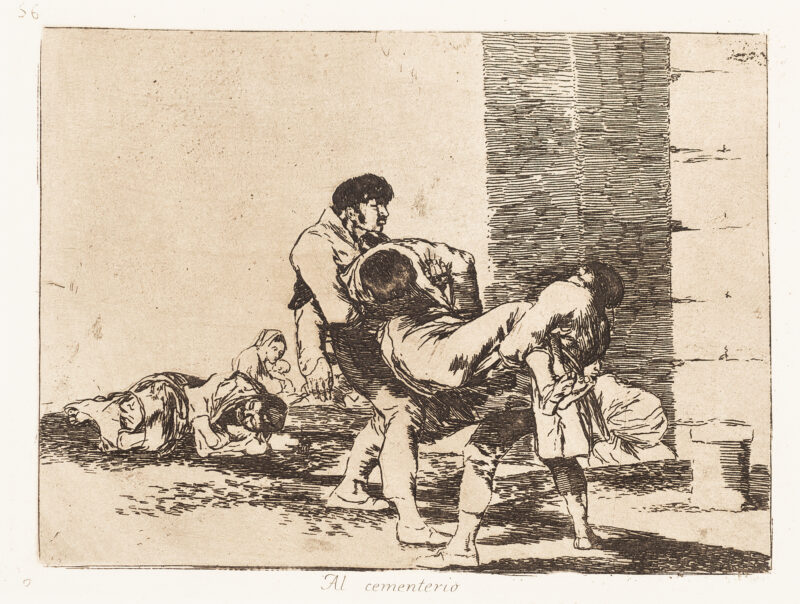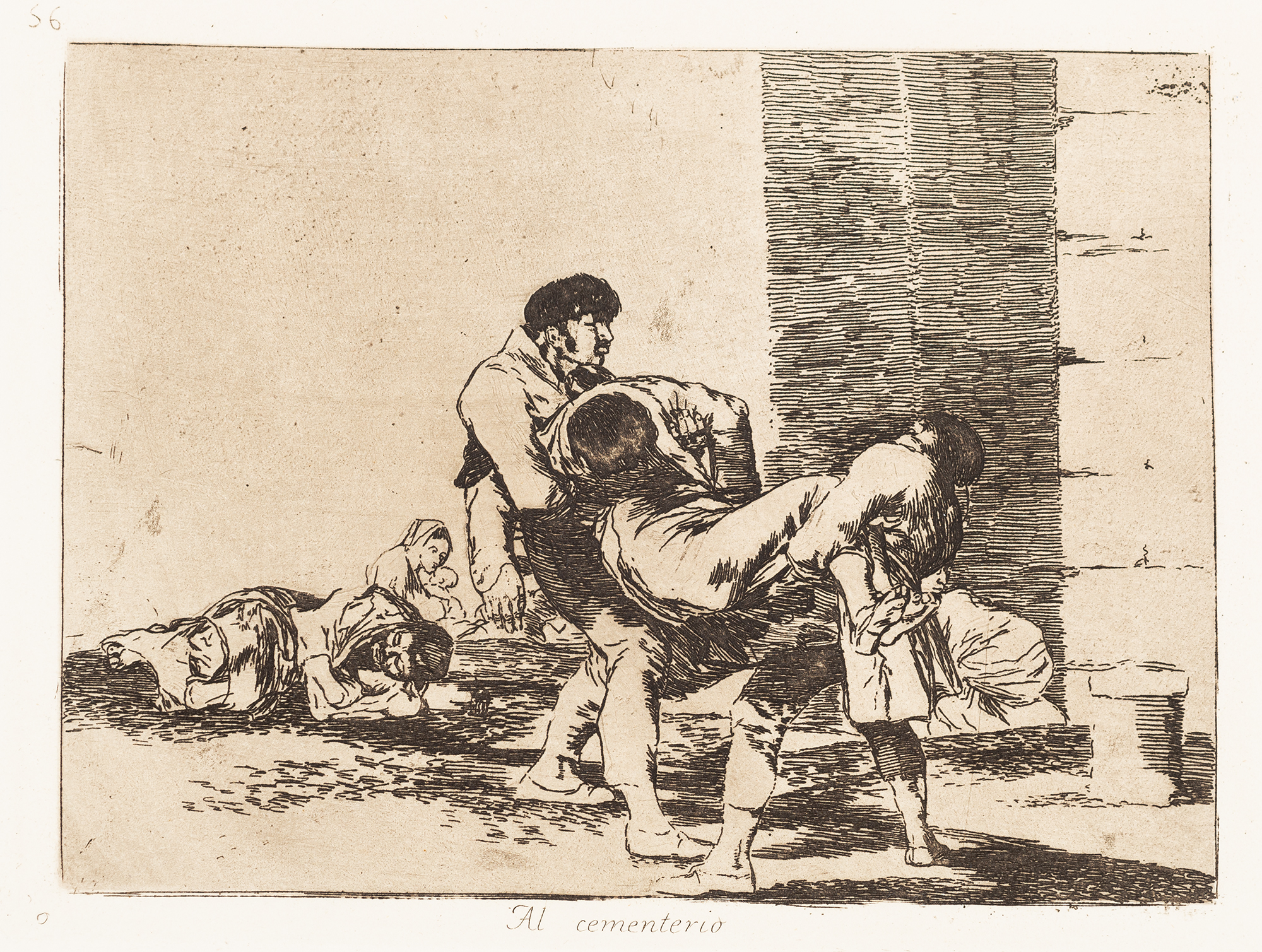
Al Cementerio
Goya, Francisco
After 1808
Artwork Information
-
Title:
Al Cementerio
-
Artist:
Goya, Francisco
-
Artist Bio:
Spanish, 1746–1828
-
Date:
After 1808
-
Medium:
Etching
-
Dimensions:
9 3/8 x 12 1/8 inches
-
Credit Line:
Wichita Art Museum, L. S. and Ida L. Naftzger Collection of Prints
-
Object Number:
1963.40
-
Display:
Not Currently on Display
About the Artwork
Francisco Goya was born in 1746 in the village of Fuendetodos where, according to legend, his father was a gilder. He studied art in Saragossa under the direction of a local painter, traveled in Italy, and was later, in Madrid, the pupil of the court painter, Francisco Bayeu, whose sister he married. His first commissions of religious works, portraits and genre scenes exhibit the characteristics of the fashionable Rococo style in which he had been trained, and, in particular, the influence of the Venetian painter Giovanni Battista Tiepolo.
Although Goya achieved every degree of worldly success in his lifetime, he also suffered personal misfortunes. He apparently fell in love with the Duchess of Alba, a great beauty and one of his aristocratic patrons. Legend says that he had an affair with her, but the facts of the story are not clear. In any case, Goya’s art records the mixed passions of desire and repulsion as well as the pain and humiliation of unrequited love. In 1792 he became seriously ill from a combination of nervous and physical maladies and the illness left him permanently deaf.
In 1810 Goya began work on a second set of satirical caprichos in which he expressed his outrage at the atrocities committed by the invading French army. This work, The Disasters of War, was inspired by Callot’s earlier commentary upon the misfortunes of war.
